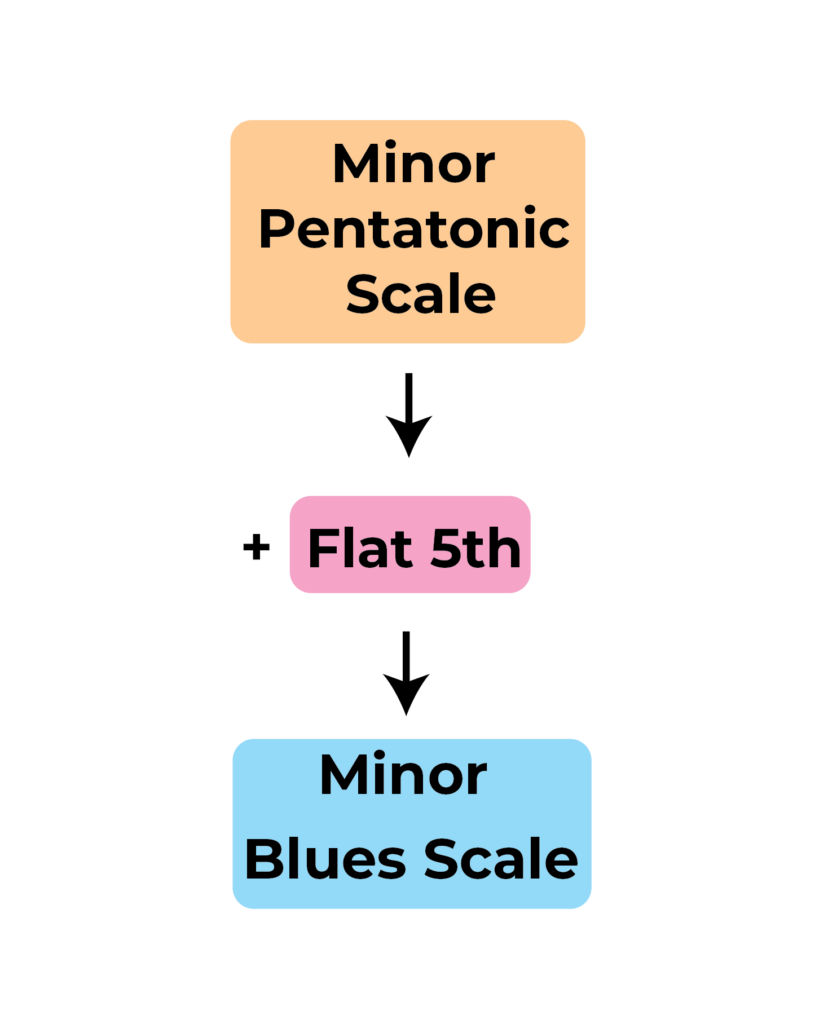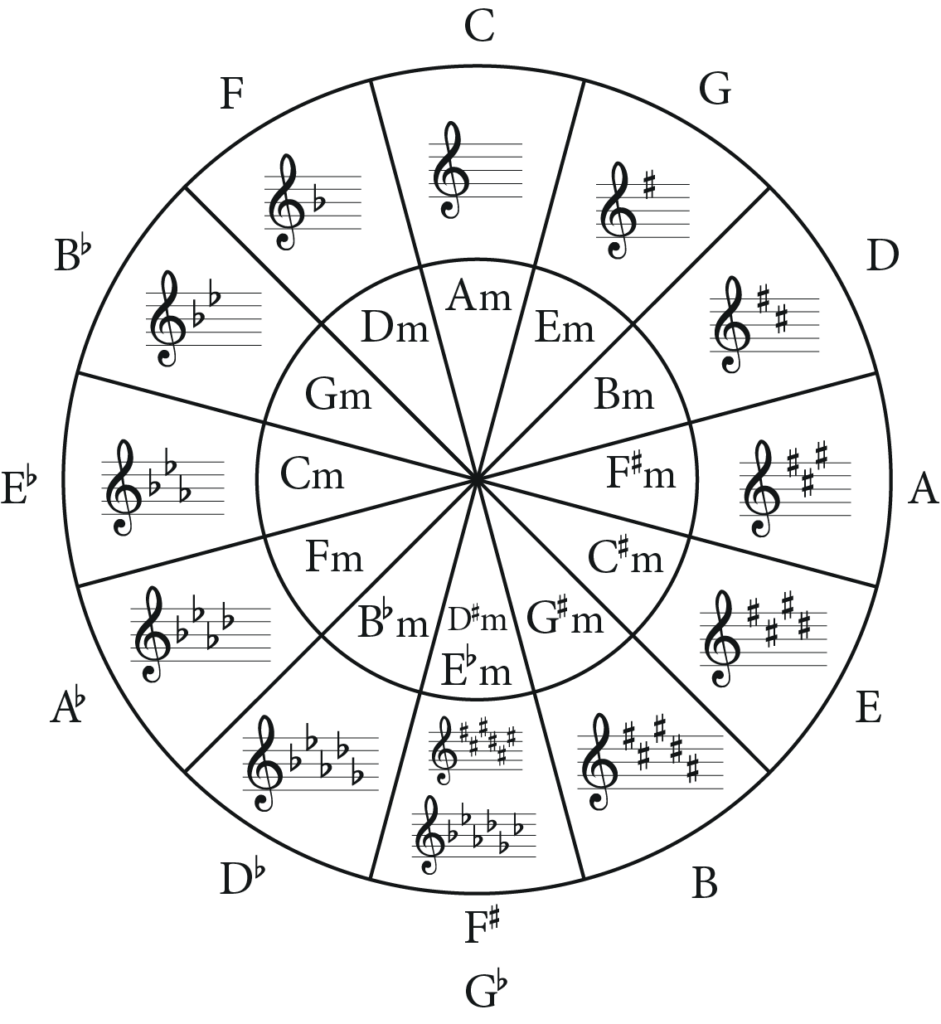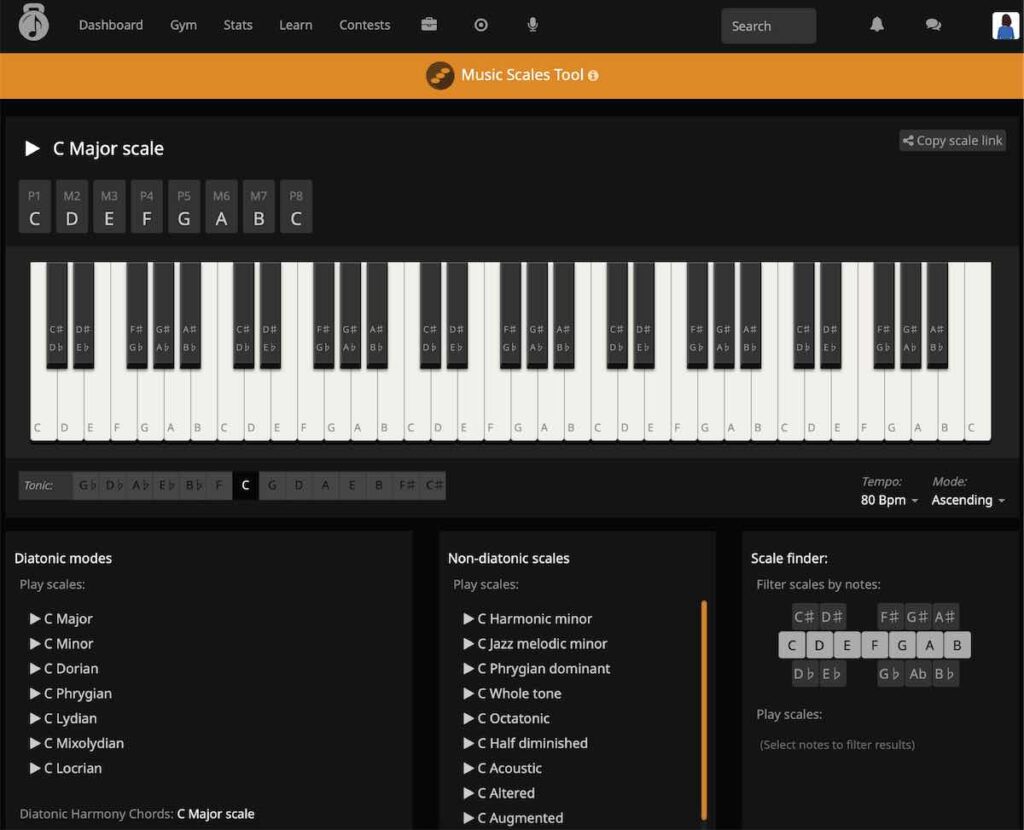The minor blues scale is based around the minor pentatonic scale with an added ‘blue note’. Its importance stems from its power to evoke strong feelings, spanning from sadness to happiness, and its essential contribution to shaping genres like blues, rock, and jazz.
The E Minor Blues Scale consists of 6 notes: E, G, A, Bb, B, D
The scale is constructed by using the following notes from the natural minor scale with an added flattened 5th – 1st (root), 3rd (b3), 4th (p4), 5th (b5), 5th (p5) and 7th (b7).

5 Shapes of the E Minor Blues Scale
Position 1

Position 2

Position 3

Position 4

Position 5

It’s important to learn these shapes well as they are exactly the same for the major blues scale. The only difference is where the root notes and blues notes are located! Also, by memorising the positions you will be able to improvise in a more intuitive way.
Here’s what each shape sounds like and how all the shapes fit together on the fretboard.
Creating the E Minor Blues Scale
The best way to create the E minor blues scale is to start with the E minor pentatonic. This is a five note scale made from the 1st, 3rd, 4th, 5th and 7th of the E natural minor scale.

To this we add a flattened 5th note and we have the E minor blues scale. You can think about it as the minor pentatonic scale with an added note, so we get a flat 5th and perfect 5th in the same scale.

The flattened 5th (b5) adds dissonance and leads the ear to want to resolve this up to the perfect 5th. This allows musicians a greater range of emotions than the minor pentatonic.
Relative Minor and Relative Major
As the minor blues scale is based on the minor pentatonic, its worth taking a look at the relationship between relative major and minor.
It is the minor pentatonic that many guitarists learn first, however we do also have the major pentatonic. This is made from the 1st, 2nd, 3rd, 5th and 6th notes of the major scale. It is related to the minor pentatonic because all major and minor scales share key signatures.
To understand this we need to know what relative major and minor keys are. If we look at the circle of fifth below you can see that for each major key we have a minor key with the same key signatures (the same number of sharps or flats).

For example C major and A Minor both have no sharps or flats. The only difference is that A minor starts on an A natural and C major starts on a C natural.
It can be confusing for beginner guitarists to realise that the major pentatonic shapes are the same as the minor pentatonic shapes. The key thing to remember it that the root note of the scale is different and therefore in a different place on each shape.
The blues note in both relative major and minor blues scales is also the same. Thinking about our example above, both C major blues scale and A minor blues scale have an Eb blues note.
Looking at E minor, we can see that it is the relative minor of G major.
Backing Tracks for E Minor Blues Scale
Practising scales can be tricky. You can run up and down them, play them in thirds, of use arpeggios to help you. Improvising over backing tracks are another great way to improve your playing and knowledge of scales.
Here are a few tracks you can use but remember that you could use any song in the key of E Minor.
Ear Training and Scales
To develop as a musician you’ll want to be able to recognise scales by ear. This is where ear training comes in. My recommendation for this is Tonegym as they have a comprehensive and fun program for training your ears! It’s what has gotten the best results with for my own students.
In the ‘tools’ section of their site, Tonegym even have a scale tool that allows you to listen virtually any scale.
For an in-depth look at ear training, here’s my full review of Tonegym.

Songs that use The Minor Blues Scale
‘The Thrill is Gone’ – BB King (B minor Blues Scale)
“The Thrill Is Gone” by B.B. King is an iconic blues ballad that captures the essence of heartache and lost love. With King’s soulful vocals and poignant guitar work, the song stands as a testament to his mastery of emotive storytelling through music.
‘Tin Pan Alley’ – SRV (B minor Blues Scale)
The 12 bar blues at the beginning of ‘Tin Pan Alley’ is a great example of the minor blues scale used to full effect. See if you can keep up with Stevie Ray Vaughan as he showcases his talent in this classic blues song.
‘Enter Sandman’ – Metallica (E Minor Blues Scale)
“Enter Sandman” by Metallica is a thundering heavy metal anthem that has become a staple of rock culture. The song’s menacing riffs and explosive energy make it a timeless embodiment of Metallica’s signature sound.
The song’s opening riff includes a Bb which is the flat 5th note in the E minor blues scale.
What’s next….?
- Learn the E Major Blues Scale
- Pick other scale to master with our range of scales blogs.
